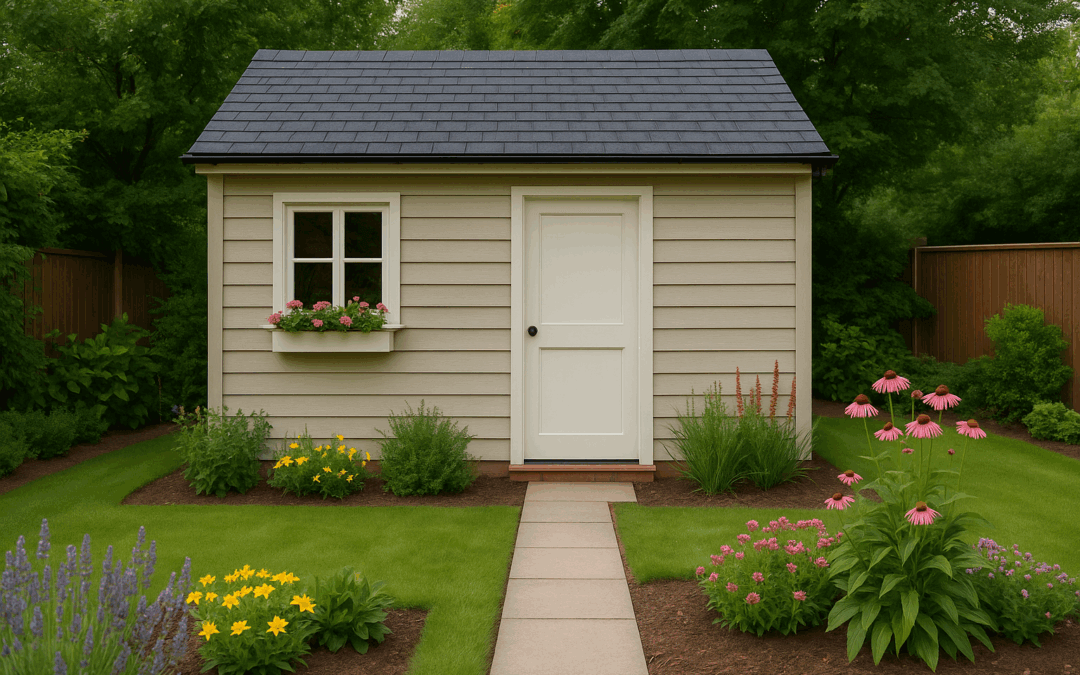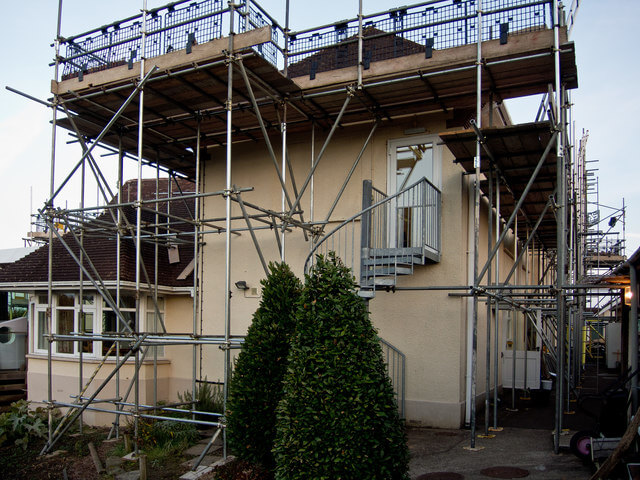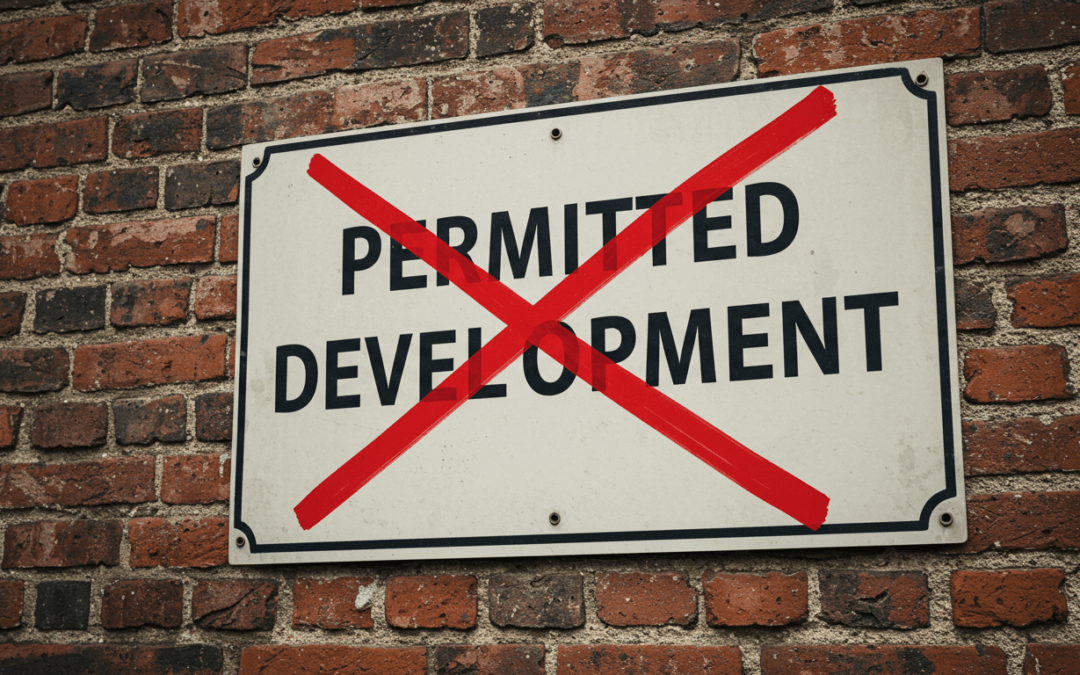
by Ian Walmsley | Feb 13, 2024
…but where the new extension is not visible from the street, it could be as high as the existing roof At the moment all outbuildings, extensions, decking etc., is limited to 50% of the curtilage. The proposal is to scrap this limit. Finally it is proposed to allow wrap-around single storey rear extensions! Current Limitations Proposed wrap-around extensions Class A on Planning Geek Class B – alterations to the roof (dormers etc.) At the moment dormers or other alterations are limited to 50 cubic metres on detached and semi-detached properties and 40 cubic metres on terraced houses. The proposal is to remove this limit. At the moment all dormers must be set back 20cm from the eaves….
by Ian Walmsley | Nov 20, 2023
…£43 (householder) £145 (all others) Permission in Principle £503 per 0.1ha The full list of updated fees will be published to Planning Geek soon. This page will be updated once live. Applications where no fee currently exists There are still a few cases where no fee is payable to the local authority and therefore no fees increase. These are: Listed building consent; Relevant demolition in a Conservation Area,; Works to trees covered by a TPO or in a Conservation Area; Hedgerow removal notice. In addition to the above no fee is payable for works to a dwellinghouse or the within the curtilage for means of access to or within it for a disabled person who is resident in it,…

by Sheryl Walmsley | Aug 16, 2023
…of a height of less than 15 metres of a microwave antenna. Development not permitted C.1 Development is not permitted by Class C if— (a) the building is a dwellinghouse or other structure within the curtilage of a dwellinghouse; (b) it would consist of development of a kind described in Class A of this Part; (c) it would consist of the installation, alteration or replacement of system apparatus within the meaning of section 8(6) of the Road Traffic (Driver Licensing and Information Systems) Act 1989 (definitions of driver information systems etc); (d) it would result in the presence on the building or structure of— (i) more than 2 antennas; (ii) a single antenna exceeding 1 metre in length; (iii) 2…
by Sheryl Walmsley | Aug 16, 2023
…building or other structure of a height of 15 metres or more of a microwave antenna and any structure intended for the support of a microwave antenna. Development not permitted B.1 Development is not permitted by Class B if— (a) the building is a dwellinghouse or the building or structure is within the curtilage of a dwellinghouse; (b) it would consist of development of a kind described in Class A of this Part; (c) it would consist of the installation, alteration or replacement of system apparatus within the meaning of section 8(6) of the Road Traffic (Driver Licensing and Information Systems) Act 1989 (definitions of driver information systems etc); (d) it would result in the presence on the building or…
by Sheryl Walmsley | Aug 8, 2023
…bay, when measured in any dimension, would be increased by more than 20%; or (b) any part of the development would be— (i) on article 2(3) land; (ii) in a site of special scientific interest; or (iii) within the curtilage of a listed building or a scheduled monument. Conditions D.2 Development is permitted by Class D subject to the condition that the materials used must be of a similar appearance to those used in the construction of the exterior of the shop. Interpretation of Class D D.3 For the purposes of Class D— “goods vehicle” has the meaning given in section 192 of the Road Traffic Act 1988; “loading bay” means any facility, including vehicle ramps, for the loading or…
by Ian Walmsley | Mar 4, 2023
…that is the total surface area covered must not exceed 0.5 hectares. And that it that on Class M! For the residential version of this, please see Class D of Part 14. Legislation Class M – installation or alteration etc of water source heat pump on non-domestic premises Permitted development M. The installation, alteration or replacement of a microgeneration water source heat pump within the curtilage of a building other than a dwellinghouse or a block of flats. Conditions M.1 Development is permitted by Class M subject to the condition that the total surface area covered by the water source heat pump (including any pipes) must not exceed 0.5 hectares. Page Updated: 4th March 2023…

by Ian Walmsley | Mar 4, 2023
…PV equipment or solar thermal equipment would be installed on a listed building or on a building within the curtilage of a listed building. J.2 Development is not permitted by Class J(a) or (b) if— (a) the solar PV equipment or solar thermal equipment would be installed on a wall and would protrude more than 0.2 metres beyond the plane of the wall when measured from the perpendicular with the external surface of the wall; (b) the solar PV equipment or solar thermal equipment would be installed on a wall and within 1 metre of a junction of that wall with another wall or with the roof of the building; or (c) in the case of a building on article…

by Ian Walmsley | Mar 5, 2023
…the flat roof, excluding chimneys. As with residential, you can also have stand-alone solar equipment for commercial properties. This is limited to a maximum of 4 meters high and not within 5 meters of the boundary. It can’t be installed in the curtilage of a listed building or scheduled monument. If on land within a conservation area, AONB, the Broads etc., it can’t be between the building an a highway. The surface area of the stand-alone solar equipment can’t be in excess of 9 square metres, nor can any dimension exceed 3 metres. Check out Class K for more information and the full legislation. You can also now install solar canopies in commercial off-street parking under Class OA. This was…

by Ian Walmsley | Mar 6, 2022
…houses. These include, but are not limited to, the following: interior alterations (except mezzanine floors which increase the floorspace of retail premises by more than 200 square metres) building operations which do not materially affect the external appearance of a building. The term ‘materially affect’ has no statutory definition, but is linked to the significance of the change which is made to a building’s external appearance a change in the primary use of land or buildings, where the before and after use falls within the same use class. For example changing from a post office to a hairdressers as these both fall under use class E the use of any buildings or other land within the curtilage of a dwellinghouse…
by Ian Walmsley | Mar 1, 2022
…not include— (a) any railway rolling stock which is for the time being on rails forming part of a railway system, or (b) any tent; The maximum dimensions allowed under the act are; Depth – External 6.8metres (22 feet 3 3/4 inches) Length – External 20 metres (65 feet 7 1/2 inches) Ceiling Height – Internal 3.05 metres (10 feet inches) Note that all these opportunities could be removed either by a previous planning application, within a curtilage of a building, or an Article 4. Part 5 is essentially the permission to caravan or camp with rights contained within the Caravan SItes and Control Development Act 1960 The three Classes with Part 5 are as follows: Class A – use……a curtilage of a building, or an Article 4. Part 5 is essentially the permission to caravan or camp with rights contained within the Caravan SItes and Control Development Act 1960 The three Classes with Part 5 are as follows: Class A – use of land as a caravan site Class B – development on caravan site required by conditions Class C – use of land by members of certain recreational organisations for tents Class B of Part 4 – temporary campsites for up to 28 days per annum (until 25th July 2024) Class BC of Part 4 – temporary campsites for up to 60 days per annum and up to 50 pitches. Page Updated: 12th August 2022 …
by Ian Walmsley | Feb 28, 2022
Interpretation of Part 4 There really isn’t much to this section, entitled Interpretation of Part 4. It is merely the definition of two words or phrases used in Part 4 – namely site and War game! Legislation Interpretation of Part 4 F. For the purposes of Part 4— “site” means the building and any land within its curtilage; and “war game” means an enacted, mock or imaginary battle conducted with weapons which are designed not to injure (including smoke bombs, or guns or grenades which fire or spray paint or are otherwise used to mark other participants), but excludes military activities or training exercises organised by or with the authority of the Secretary of State for Defence. …
by Ian Walmsley | Feb 28, 2022
…special scientific interest, (ii) a safety hazard area, or (iii) a military explosives storage area; (e) where any land adjacent to the site is used for a purpose within Part C of the Schedule to the Use Classes Order (residential purposes), any part of any temporary building provided is within 5 metres of the boundary of the curtilage of that residential land; or (f) the height of any new building provided would exceed 7 metres. Conditions CA.2.—(1)Development is permitted by Class CA subject to the following conditions— (a) the site must be approved for use as a state-funded school by the relevant Minister; (b) before beginning the development, the developer must apply to the local planning authority for a determination…
by Ian Walmsley | Feb 27, 2022
…consisting of a change of use of a building and any land within its curtilage from a use falling within one of the following provisions of the Use Classes Order— (a) Class C1 (hotels) of Schedule 1; (b) Class C2 (residential institutions) of Schedule 1; (c) Class C2A (secure residential institutions) of Schedule 1; or (d) Class E (commercial, business or service) of Schedule 2, to use as a state-funded school falling within Class F.1(a) of Schedule 2 to that Order. Development not permitted T.1 Development is not permitted by Class T if— (b) the site is, or forms part of, a military explosives storage area; (c) the site is, or forms part of, a safety hazard area; or (d)…
by Ian Walmsley | Feb 5, 2022
…be a formal planning application or it can be permitted development such as Class AA. Check out other permitted development options on our changes of use page. Legislation Class AA – drinking establishments with expanded food provision Permitted development AA. Development consisting of a change of use of a building and any land within its curtilage— (a) from a use falling within article 3(6)(p) (public house, wine bar, or drinking establishment) of the Use Classes Order to a use falling within article 3(6)(q) (drinking establishment with expanded food provision) of that Order; (b) from a use falling within article 3(6)(q) to a use falling within article 3(6)(p). Pubs Page updated: 29th August 2023…

by Ian Walmsley | Aug 27, 2020
…a bit deeper. The Permitted development rights for householders – Technical Guidance isays the following as far as a Granny Annexe is concerned. Class E sets out the rules on permitted development for buildings etc within the curtilage of a house (see page 7). Buildings which are attached to the house are not permitted under Class E (they would be subject to the rules in Class A). Buildings under Class E should be built for purposes incidental to the enjoyment of the house. Paragraph E.4 of Class E indicates that purposes incidental to the enjoyment of the house includes the keeping of poultry, bees, pet animals, birds or other livestock for the domestic needs or personal enjoyment of the occupants…

by Ian Walmsley | Aug 4, 2020
…not permitted D.1 Development is not permitted by Class D if the outlet and its casing would— (a) exceed 0.2 cubic metres; (c) be within a site designated as a scheduled monument; or (d) be within the curtilage of a listed building. Conditions D.2 Development is permitted by Class D subject to the conditions that when no longer needed as a charging point for electric vehicles— (a) the development is removed as soon as reasonably practicable; and (b) the wall on which the development was mounted or into which the development was set is, as soon as reasonably practicable, and so far as reasonably practicable, reinstated to its condition before that development was carried out. Updated: 10th May 2025…

by Ian Walmsley | Jul 22, 2020
…of the dwellinghouse; (j) the development would include the provision of visible support structures on or attached to the exterior of the dwellinghouse upon completion of the development; or (k) the development would include any engineering operations other than works within the curtilage of the dwellinghouse to strengthen its existing walls or existing foundations. Conditions AA.2.—(1) Development is permitted by Class AA subject to the conditions set out in sub-paragraphs (2) and (3). (2) The conditions in this sub-paragraph are as follows— (a) the materials used in any exterior work must be of a similar appearance to those used in the construction of the exterior of the existing dwellinghouse; (b) the development must not include a window in any wall…

by Ian Walmsley | Jul 8, 2020
…decision 7ZA. Prior approval applications: modified procedure in relation to call-in of applications 7A. Review 8. Revocations and saving Schedule 1 – Article 2(3) to (5): (relates to Article 2) Part 1 – Article 2(3) land Part 2 – Article 2(4) land Schedule 2 – Permitted Development Rights: (relates to Article 3) Part 1 – development within a curtilage of a dwellinghouse Class A – Enlargement, improvement or other alteration of a dwellinghouse e.g. Extensions Class AA – Enlargement of a dwellinghouse by construction of additional storeys Class B – Additions etc to the roof of a dwellinghouse e.g. Dormers Class C – Any other alterations to a roof of a dwellinghouse Class D – Porches Class E – Buildings…

by Ian Walmsley | Jun 22, 2019
…Part 1 (development within the curtilage of a dwellinghouse); (b) Classes D, E and G of Part 2 (certain minor operations); (c) Classes A, AA, C, D, G, J, I, K, JA, L, M, MA, N, O, P, PA, Q, R, S, T and U of Part 3 (certain changes of use); (d) Classes B, BB, BC, C, CA, D and E of Part 4 (temporary uses); (da) Classes A and B of Part 6 (agricultural and forestry); (e) Classes A to H, L, M, MA and N of Part 7 (non-domestic extensions, alterations etc); (ea) Class B of Part 11 in so far as it relates to a development mentioned in paragraph B.1(d) (demolition of concert halls, venues for…

by Ian Walmsley | Jul 15, 2018
…permitted D.1 Development is not permitted by Class D if— (a) permission to use the dwellinghouse as a dwellinghouse has been granted only by virtue of Class G, M, MA, N, P, PA or Q of Part 3 of this Schedule (changes of use); (b) the ground area (measured externally) of the structure would exceed 3 square metres; (c) any part of the structure would be more than 3 metres above ground level; or (d) any part of the structure would be within 2 metres of any boundary of the curtilage of the dwellinghouse with a highway; or (e) the dwellinghouse is built under Part 20 of this Schedule (construction of new dwellinghouses). Page updated: 22nd March 2025…














